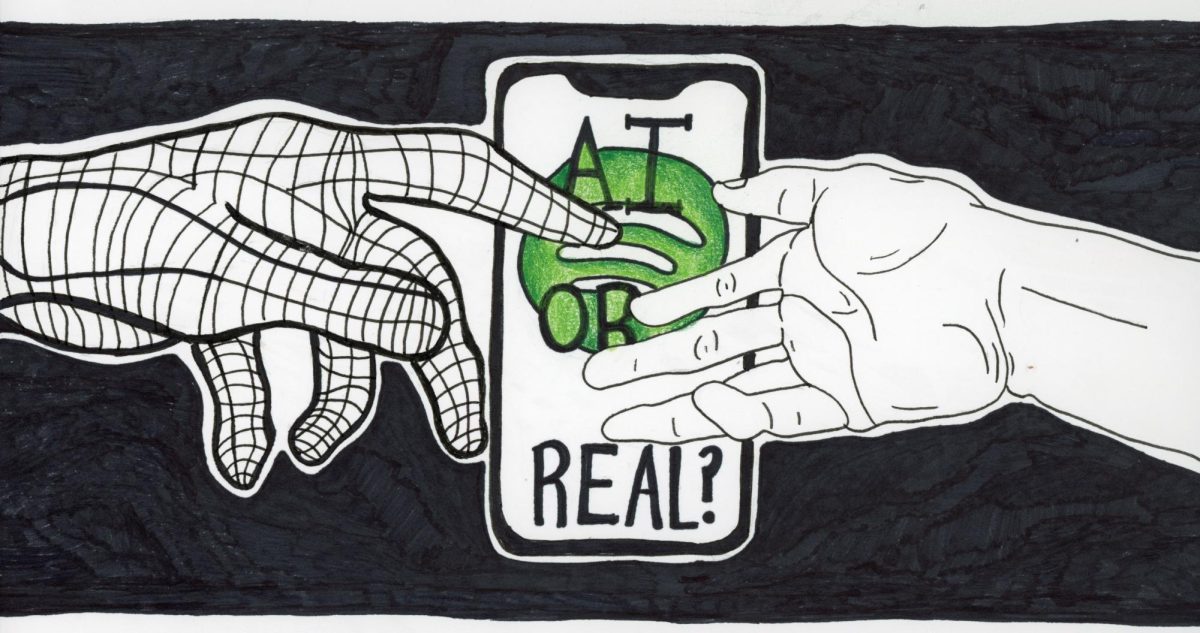The Pledge of Allegiance is something students are all too familiar with, since the day we can remember we have been hearing the pledge of allegiance every morning at school. Believe it or not, the pledge we know now was different from when it was originally written by socialist minister Francis Bellamy in 1892. The pledge was originally published in The Youth’s Companion from which it read “I pledge allegiance to my Flag and the Republic for which it stands, one nation, indivisible, with liberty and justice for all.”

31 years later in 1923 the words “the Flag of the United States of America” were added to the pledge. At that time it read “I pledge allegiance to the Flag of the United States of America and to the Republic for which it stands, one nation, indivisible, with liberty and justice for all.”
The final alteration to the pledge was made in 1954 by President Eisenhower in which the words “Under God” were added. The final pledge in its entirety read “I pledge allegiance to the Flag of the United States of America, and to the Republic for which it stands, one Nation under God, indivisible, with liberty and justice for all.” Nearly 10 years before in 1943, the landmark supreme court ruled in favor of the free speech amendment to the constitution, stating that saying the pledge was optional.

When asked if he stands for the Pledge of allegiance, senior Jackson Blair said, “Yes, every day, I do it to show respect. I stand for the pledge because I honor my country and the fallen heroes that have died for my freedom. I am an American patriot who believes The United States of America is the greatest country in the world. When people don’t stand they don’t show much respect. I would stand if I was the only one in the room, if I was late to class then I would go into another room and stand in there.”
Students are not forced to take part in the Pledge of Allegiance, and if you look around, many students choose not to. Not standing for the pledge can draw in some questioning looks from other students and teachers, some of which are noticed by students but easily brushed off. So what do students really think of standing or sitting for the Pledge of Allegiance?
According to a Common Sense poll, the anonymous students’ responses range anywhere from disinterested to even controversial and many students are not afraid to share how they really feel.
“If you can’t even stand for those who’ve given their lives and fallen for the country you live in then I believe you shouldn’t be living here,” an anonymous student who answered yes to the poll stated.
Another student said, “It’s because it’s so rude and so disrespectful not to. If I was the only one to stand for the pledge in a classroom I would yell at them for not standing up. Soldiers fought for our country and that is why we do the pledge to show our respect to them. The people who don’t stand have no respect for our country or the military. It’s just disrespectful not to.”
A few of the responses from students who selected no when asked if they stand for the pledge were “It’s just a personal preference, really. I don’t feel the need to pledge my allegiance to a state who’s completely against my entire existence.”
Another student said “feels a little too weird, I don’t agree with what it all stands for.”
“I honor it (stop what I’m doing) but I don’t stand,” says another.
Instead of answering yes or no, many students choose the answer option ‘sometimes.’
“I don’t stand for the pledge except for days of remembrance; I honor the people, not the structure of our nation,” one respondent said.
“It just feels so redundant! I don’t feel like I need to pledge allegiance to my country every day for 12 years, man!” another said.
So can students get in trouble for not saying or standing for the Pledge of Allegiance? The answer is no, students are allowed to opt out of the Pledge of Allegiance but if a student becomes disruptive of other students during the pledge they could be subject to punishment. In fact, 46 of the 50 states in the U.S do have some sort of requirement that states public schools must set aside time for the pledge to be recited or the school could be penalized. The four schools that are not required to have any time set aside for the pledge of allegiance are Arizona, Hawaii, Vermont, and Wyoming. In states such as Florida, Texas, Pennsylvania and Utah students are required to get permission from a parent or guardian to be able to opt out of the pledge. Unlike public schools, private school students could be required to stand for the pledge as they are not bound by the first amendment.
The Pledge of Allegiance has evolved significantly since its creation in 1892, reflecting changes in society and national values. Today, students have the freedom to decide whether to participate, highlighting the importance of individual choice and expression in our education system. As the debate continues, it’s clear that the pledge remains a powerful symbol, bringing forward strong and varied opinions from students across the country.




















Lori Wegener • Mar 23, 2025 at 11:54 am
Another well-drawn illustration using digital media. The foreshortening of the face with the flag in the background is a unique perspective. Congrats on your recognition!